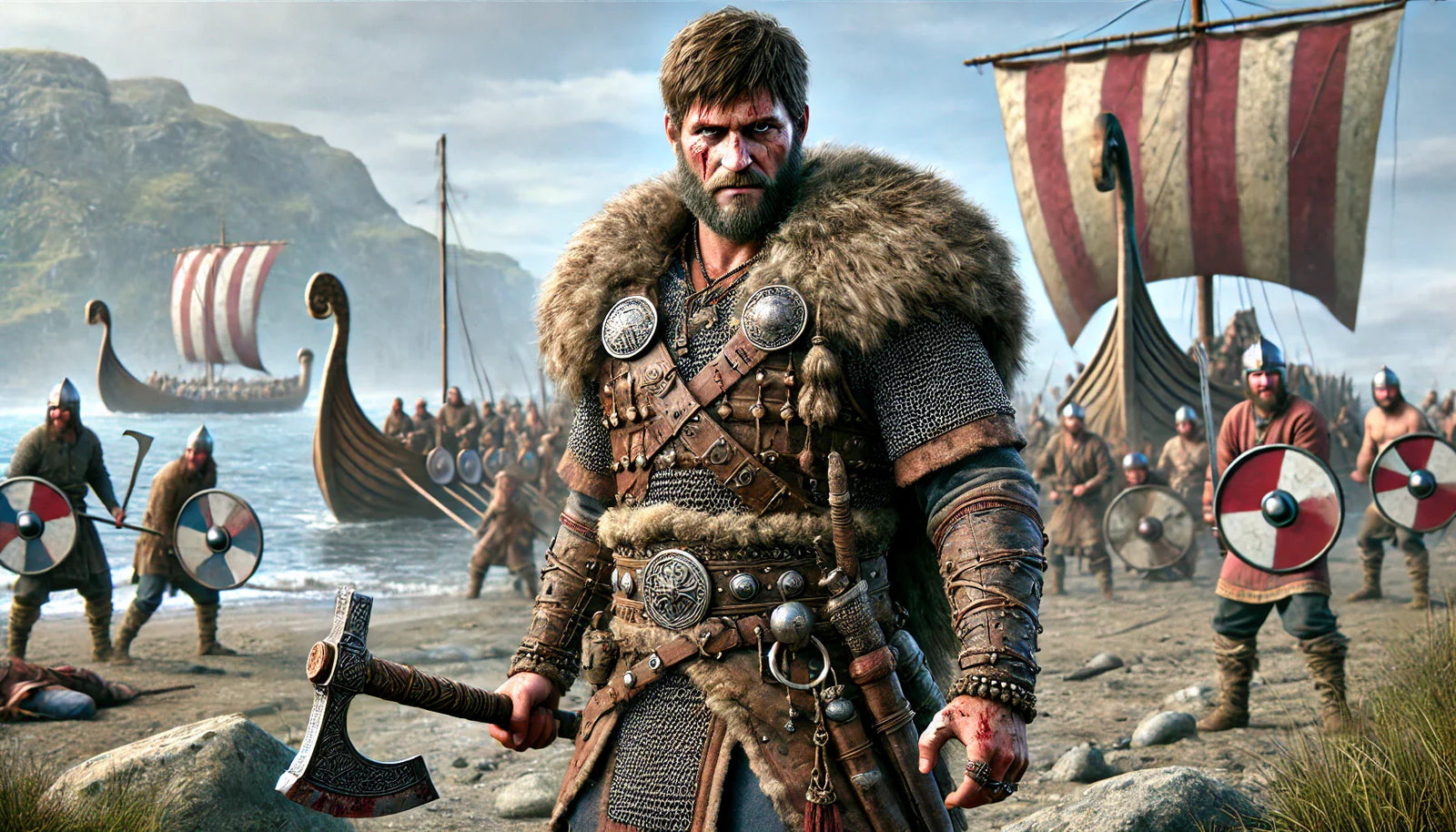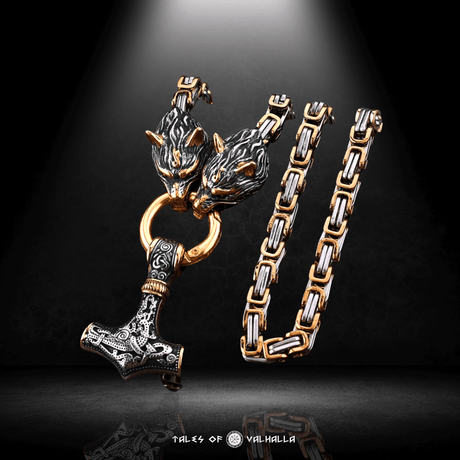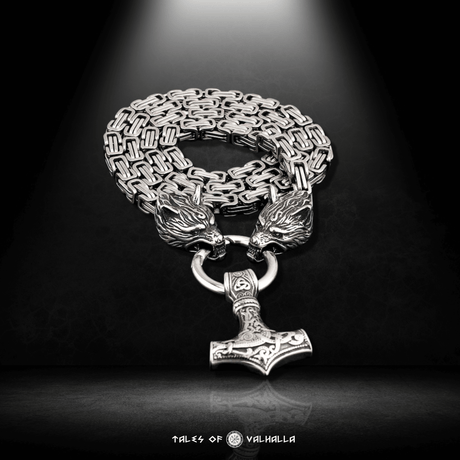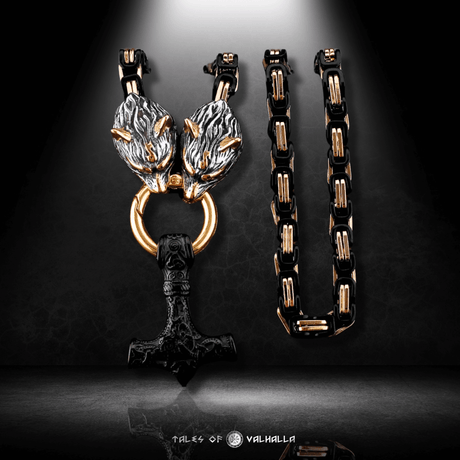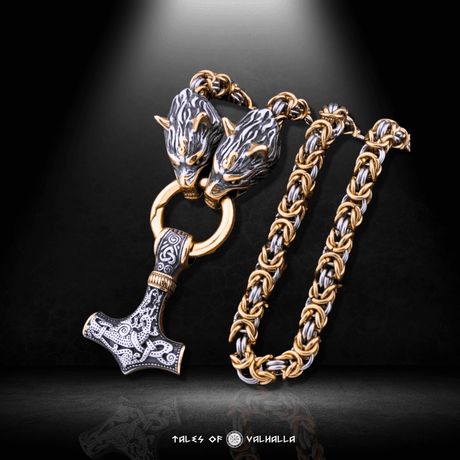Few Viking warriors have left a lasting mark on both Norse mythology and history quite like Bjorn Ironside. As the son of the legendary Viking king Ragnar Lothbrok, Bjorn was born into a world of conquest, bloodshed, and unrelenting ambition. He grew to embody the fierce independence and warrior spirit of the Vikings, establishing himself as one of the most renowned leaders of the Viking Age. His story, though steeped in legend, reflects the real history of the Vikings, their raids, and their relentless quest for power.
This in-depth exploration of Bjorn Ironside’s history delves into both the man and the myth, uncovering the truths behind his life, his campaigns, and the lasting legacy he left behind.
Who Was Bjorn Ironside? A Blend of Myth and History
Bjorn Ironside is a central figure in the sagas of Norse mythology, often regarded as one of the most powerful Viking kings of the 9th century. Born into the legendary Lothbrok dynasty, Bjorn’s reputation was shaped by his father Ragnar’s influence, but he was destined to carve out his own place in history. His legacy spans from the cold waters of Scandinavia to the sun-soaked shores of the Mediterranean, with stories of daring raids and strategic conquests.
Bjorn Ironside’s Mythical Origins
According to Bjorn Norse myth, Bjorn Ironside was one of many sons of Ragnar Lothbrok, alongside his brothers Ivar the Boneless, Hvitserk, and Sigurd Snake-in-the-Eye. Ragnar himself is a semi-mythical figure, and while much of his life is romanticized, many historians believe that Ragnar and his sons were based on real Viking leaders.
Bjorn Ironside’s mythological presence cannot be separated from his father’s legacy. His name appears in various sagas, including the Tale of Ragnar’s Sons, which recounts how Bjorn, alongside his brothers, led expeditions across Europe. These texts serve as the foundation for much of what we know about Bjorn, although they are often riddled with legendary elements that blur the line between history and fantasy.
The Meaning Behind Bjorn Ironside’s Name
The name "Ironside" is thought to have been earned in battle, symbolizing his incredible resilience and strength as a warrior. According to some sagas, Bjorn was given the name because he was invulnerable to steel—swords and axes could not harm him. This story is likely a myth, but it emphasizes the near-superhuman attributes the Vikings admired in their leaders.
Like other Viking heroes, Bjorn’s legend grew larger with every retelling, and the invincible warrior image became central to his legacy.
Bjorn Ironside’s Real-Life Legacy: The Viking Warrior and King
While the mythical tales of Bjorn Ironside capture the imagination, it is Bjorn Ironside’s real life that solidifies his place in Viking history. His achievements as a warrior and king were not just products of legend; they were based on his real exploits across Europe and the Mediterranean.

Bjorn Ironside: The Viking Warrior and King
Early Life and Viking Raids
Bjorn Ironside’s early life is largely undocumented, but it is believed he was born in Scandinavia, likely in what is now Sweden. As one of Ragnar Lothbrok’s sons, he would have been raised in a world dominated by warfare, raiding, and seafaring. Viking society prized strength, strategy, and bravery, qualities that Bjorn would have developed from a young age.
Bjorn’s most famous campaigns took place during the 9th century, when he embarked on a series of Viking raids throughout Western Europe. Like many Viking leaders, he sought wealth and power through the plundering of Christian monasteries, which were often poorly defended but rich in gold and other valuables. His raids extended across the Frankish Empire, the British Isles, and the Iberian Peninsula.
The Mediterranean Expedition: Bjorn’s Greatest Feat
One of Bjorn Ironside’s most famous exploits was his Mediterranean campaign, which stands out as a hallmark of Viking ambition and seafaring prowess. Along with his brother Hastein, Bjorn led a fleet of Viking longships into the Mediterranean Sea, reaching as far as the coasts of Spain, Italy, and even North Africa. This was no small feat; it required navigating unfamiliar waters, surviving harsh climates, and facing well-fortified cities.
The Legendary Raid on Luna
Perhaps the most well-known story from this campaign is Bjorn’s raid on the city of Luna, located in modern-day Italy. According to medieval sources, Bjorn and his men initially believed Luna to be the fabled city of Rome. Intent on conquering the heart of the Roman Empire, Bjorn devised an ingenious plan to breach the city’s defenses.
Feigning his own death, Bjorn asked the people of Luna to grant him a Christian burial within the city walls. Once his "coffin" was brought inside, Bjorn sprang to life, attacking the guards and opening the gates to his Viking forces. While the city wasn’t actually Rome, the raid on Luna demonstrated Bjorn’s cunning and his willingness to use strategy as well as brute force in his conquests.
- See more: Viking Necklaces Collection
Though the accuracy of this story is debated, it serves as a testament to Bjorn’s boldness and ingenuity—qualities that were essential for Viking leaders seeking to extend their influence far beyond their homeland.
The Rise of Bjorn Ironside as King of Sweden
While Bjorn Ironside’s early years were marked by raids and expeditions, his later years were spent consolidating power in Scandinavia. After years of campaigning, Bjorn returned to Sweden, where he established himself as a king. His rule was centered around Uppsala, an important political and religious hub in Viking society. It is here that Bjorn’s leadership and strategic acumen truly shone.

The Rise of Bjorn Ironside as King of Sweden
Uppsala: The Seat of Viking Power
Uppsala was not just a political center; it was also a key site of religious worship in Viking culture. The famous temple at Uppsala was home to pagan rituals and sacrifices, making it a spiritual heartland for the Norse people. As king, Bjorn would have presided over these religious ceremonies, reinforcing his power through both political and religious means.
Ruling from Uppsala, Bjorn extended his influence over other Viking chieftains, securing alliances and amassing wealth. He maintained a delicate balance between war and diplomacy, traits that allowed him to strengthen his kingdom and secure his legacy as one of the great Viking kings.
Bjorn Ironside’s Descendants and Legacy in Scandinavia
Bjorn Ironside’s influence did not end with his death; his descendants would go on to rule Sweden and continue his legacy of exploration and conquest. The Lothbrok dynasty, of which Bjorn was a key figure, helped shape the history of Scandinavia for generations.
Bjorn’s ability to lead in both war and peace set a precedent for future Viking kings, and his descendants carried his name forward. The exact line of descent is debated among historians, but many believe that several Swedish and Danish kings can trace their lineage back to Bjorn Ironside. This legacy ensured that Bjorn’s name would live on, not just in myth but in the actual governance of Viking kingdoms.
Where Is Bjorn Ironside Buried? Uncovering the Mystery
One of the most intriguing questions surrounding Bjorn Ironside is the location of his burial. As with many Viking leaders, the exact location of his final resting place remains a mystery. However, several theories have emerged over the years, linking Bjorn to specific burial sites in Sweden.
The Burial Mound on Munsö Island
A popular theory suggests that Bjorn Ironside is buried on the island of Munsö, near Stockholm, Sweden. The island is home to several ancient burial mounds, one of which is believed to belong to Bjorn. These mounds, known as högar, were used by Viking chieftains and kings to bury their dead, often with their weapons, treasures, and sometimes even their ships.
The Munsö mound is part of the larger Munsö burial field, which contains multiple Viking graves. While there is no definitive proof that this mound is Bjorn’s, the grandeur of the site has led many historians to believe it was the resting place of an important Viking leader. Excavations of nearby burial mounds have revealed a wealth of Viking artifacts, further suggesting that Munsö was a significant burial site for the Viking elite.
The Significance of Viking Burial Mounds
Viking burial mounds were more than just graves; they were monuments to the power and prestige of the deceased. The size of the mound, the artifacts buried within, and the location all reflected the status of the person entombed. For a king like Bjorn Ironside, a massive burial mound on an island near Sweden’s capital would have been a fitting tribute.
In Viking culture, the dead were often buried with items they might need in the afterlife, including weapons, food, and even their boats. These items were believed to help them navigate the journey to Valhalla, where they would spend eternity fighting and feasting with the gods. Bjorn, with his warrior’s legacy, would have been buried with the finest treasures and weapons, befitting his status as a king and conqueror.
How Did Bjorn Ironside Die? Theories and Legends
Despite his legendary exploits, little is known about how Bjorn Ironside died. Unlike many Viking warriors who perished in battle, Bjorn is said to have lived to old age, dying peacefully in his homeland. This is somewhat unusual, as the ideal Viking death was one that occurred on the battlefield, ensuring a place in Valhalla.

How Did Bjorn Ironside Die?
The Peaceful Death of a Warrior King
According to some sagas, Bjorn’s death was not marked by the bloodshed and violence that characterized his life. Instead, he died in peace, having outlived many of his enemies and secured his kingdom. For a Viking leader, living to an old age was both a blessing and a curse—while it indicated success, it also meant missing out on the warrior’s afterlife in Valhalla.
Other stories suggest that Bjorn may have died in battle, though there is little evidence to support this theory. Given his extensive campaigns and his survival through countless battles, it is possible that Bjorn did, in fact, die of natural causes.
The Viking Afterlife: Valhalla or Hel?
In Viking belief, warriors who died in battle were taken to Valhalla, the hall of the slain, where they would fight alongside Odin until the end of the world. Those who died peacefully, however, were said to go to Hel, a cold and dreary underworld ruled by the goddess of the same name.
For a warrior like Bjorn Ironside, dying peacefully might have been seen as less honorable, but it also meant he had lived long enough to protect his kingdom and see his descendants carry on his legacy. Whether he ended up in Valhalla or Hel, Bjorn’s memory lives on through the stories of his life and his enduring legacy.
Bjorn Ironside’s Impact on Modern Viking Culture
Bjorn Ironside’s story has not been forgotten. In recent years, popular culture has reignited interest in Viking history, and Bjorn Ironside’s real life has once again become a topic of fascination. From television series to historical reenactments, Bjorn’s legacy continues to inspire modern audiences.
Bjorn Ironside in the TV Show Vikings
One of the most significant contributors to Bjorn’s modern popularity is the TV show Vikings. The show, which aired from 2013 to 2020, dramatized the lives of Ragnar Lothbrok and his sons, with Bjorn portrayed by actor Alexander Ludwig. The series brought Bjorn’s character to life for a new generation of viewers, highlighting his struggles, his ambitions, and his complicated relationship with his father.
Fiction vs. History in Vikings
While Vikings took many creative liberties with Bjorn’s story, the show stayed true to the essence of his character. It portrayed him as a strong, independent leader who struggled to balance his desire for power with his sense of duty to his family. The show also introduced many viewers to the broader history of the Viking Age, sparking renewed interest in Bjorn Ironside’s history and the real events that inspired the show.
For many fans, the images of real Vikings from historical sources are now intertwined with the fictional depictions from the show. While Vikings is not always historically accurate, it has succeeded in bringing Viking history into mainstream culture.
Bjorn Ironside’s Enduring Legacy
Beyond the world of entertainment, Bjorn Ironside’s legacy continues to shape how we understand the Viking Age. Historians, archaeologists, and Viking enthusiasts alike continue to study his life, his campaigns, and his impact on Scandinavian history. From the Munsö burial mound to the stories of his Mediterranean raids, Bjorn remains a key figure in both Viking history and mythology.
Conclusion
Bjorn Ironside’s legacy, like that of many Viking leaders, is a blend of myth, history, and legend. From his early life as the son of Ragnar Lothbrok to his later years as king of Uppsala, Bjorn’s story reflects the essence of Viking culture: exploration, conquest, and resilience.
Whether he is remembered for his daring raid on Luna, his rule in Sweden, or his enduring influence through popular culture, Bjorn Ironside stands as a testament to the power of Viking leadership. His life, both real and mythical, continues to captivate modern audiences and inspire those who seek to understand the complexities of the Viking world.
FAQ
1. Who was Bjorn Ironside?
Bjorn Ironside was a legendary Viking leader and warrior, believed to be one of the sons of the famous Viking hero Ragnar Lothbrok. He was known for his successful raids across Europe, particularly in France and the Mediterranean. His exploits and leadership established him as a key figure in Viking history and Norse sagas.
2. Was Bjorn Ironside a real historical figure?
Yes, Bjorn Ironside is believed to have been a real Viking chieftain, although many of the details surrounding his life have been intertwined with myth and legend. His story is chronicled in medieval texts like the Sagas of the Icelanders and The Tale of Ragnar's Sons, but much of his life is a blend of historical fact and Norse mythology.
3. Why is Bjorn Ironside called "Ironside"?
The nickname "Ironside" was likely given to Bjorn because of his reputation as a strong, resilient warrior who was nearly invincible in battle. The term "Ironside" refers to someone who is exceptionally tough or difficult to defeat, suggesting that Bjorn was known for his combat skills and ability to survive even the fiercest of battles.
4. What are some of Bjorn Ironside’s most famous achievements?
Bjorn Ironside is most famous for leading Viking raids across Europe, particularly in the Mediterranean. He led successful campaigns in France, Spain, and Italy, including the legendary (though possibly exaggerated) attack on the city of Luna, which was mistakenly believed to be Rome. His voyages and conquests solidified his legacy as one of the most successful Viking leaders.
5. Where is Bjorn Ironside believed to be buried?
According to legend, Bjorn Ironside is said to be buried on the island of Munsö in Lake Mälaren, Sweden. A burial mound known as "Björn Järnsidas hög" (Bjorn Ironside's Mound) on the island is traditionally associated with him, although there is no definitive proof that this is his final resting place.
6. How did Bjorn Ironside die?
The exact circumstances of Bjorn Ironside's death are unclear and remain the subject of legend. Unlike many Viking leaders who died in battle, Bjorn is believed to have lived to an old age and may have died peacefully. Some accounts suggest he died in his homeland of Sweden, but as with much of Viking lore, the details of his death are uncertain and shrouded in myth.

